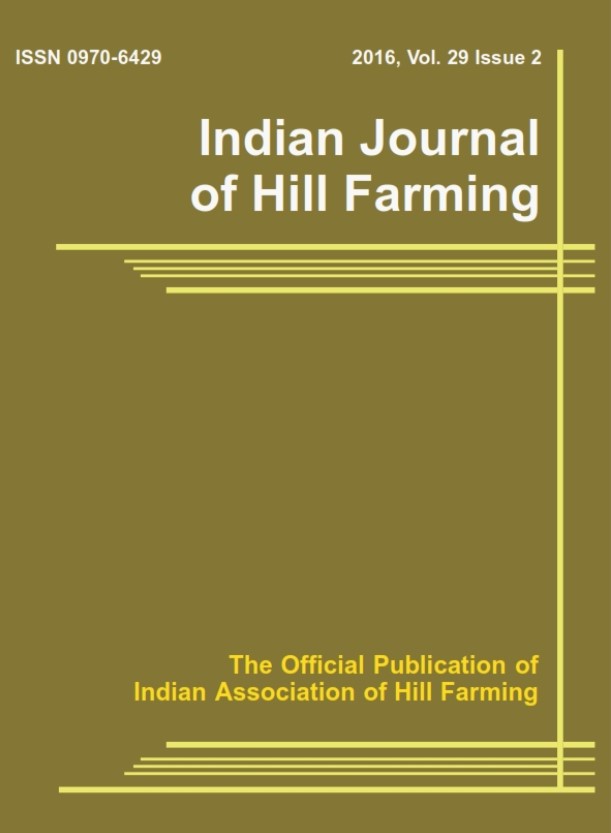Status of organic farming and economics of organic vegetable cultivation in Himachal Pradesh under Paramparagat Krishi Vikas Yojana (PKVY)
Keywords:
Organic farming, cropping pattern, Benefit cost ratio, Economics.Abstract
This paper was an attempt to analyze the present status of organic farming in Himachal Pradesh and economics of organic vegetable cultivation in Chamba district of Himachal Pradesh. There were 39,780 registered organic farmers in the state with total area under organic crops in the state was about 21,743 hectares. In 2017-18, there was 7,263 clusters were present at national level out of which 110 clusters were formed at state level (H.P.) under Paramparagat Krishi Vikas Yojana (PKVY). The analysis of cropping pattern revealed that main organic crops are maize, paddy and rajmash in kharif season and wheat, barley, pea and potato in rabi season. Productivity of organic vegetable crops was highest in potato (about 106 q/ha) followed by peas (about 92 q/ha). Gross returns and net returns over variable cost was highest in potato (Rs. 84,761/ha and Rs. 42,572/ha) and followed by peas (Rs. 64,087/ha and Rs. 42,388/ha) on overall farm situation, respectively. Benefit cost ratio was highest in peas (1.59) followed by potato (1.39). The study highlighted that organic pea and potato crops were profitable endeavour.




